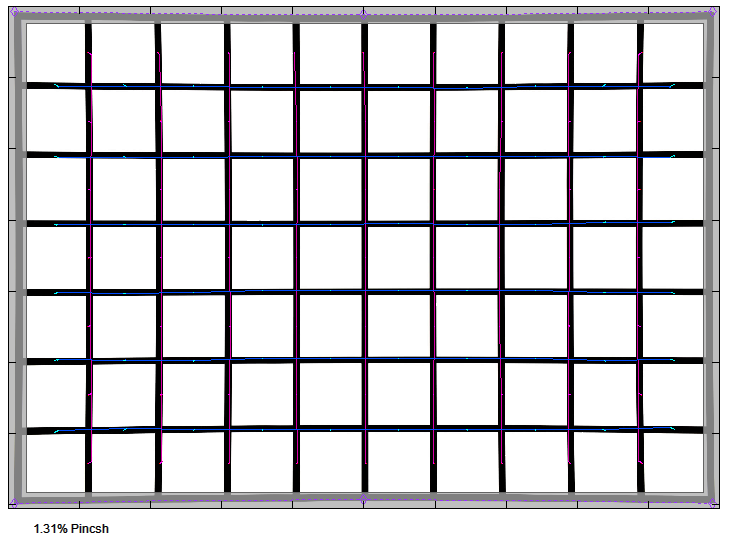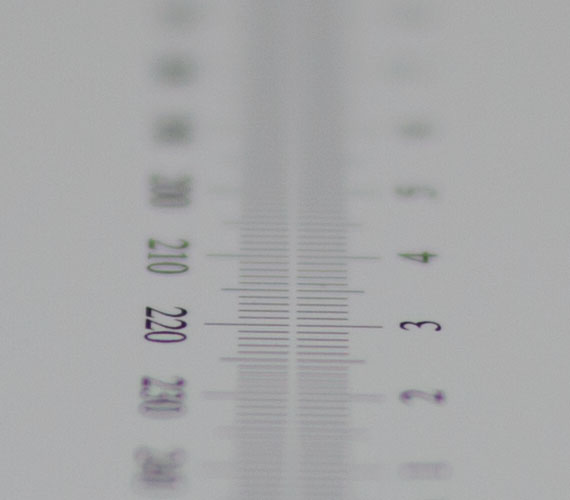|
Sigma 50mm f/1.4 DG HSM | A ("Art") - Full Format Review / Lens Test Report - Analysis |
|
Lens Reviews -
Canon EOS (Full Format)
|
|
Page 2 of 3

Distortion
In the full format scope the Sigma produces a slight pincushion distortion (1.3%). While this is usually no problem, it is worth to note that this is somewhat different compared to the negligible distortion in the APS-C scope thus most of "the distortion action" seems to happen in the outer image region here.

Vignetting
Unsurprisingly the vignetting figures are quite a bit higher than what we saw in the APS-C format tests. However, even so the figures are comparatively moderate with a light falloff of ~1.7EV (f-stops) at max. aperture. Stopping down to f/2 resolves most of the issue and it's essentially irrelevant from f/2.8 onward.

MTF (resolution)
The Sigma lens certainly fulfills the high expectations in terms of resolution. The center quality is already very good to excellent at f/1.4 and the borders and corners are already good to very good. More importantly and quite usual - the contrast is also very snappy for such a large aperture setting. Stopping down to f/2 doesn't change too much but there's a boost in quality at f/2.8. The peak performance is reached between f/4-f/8 with an excellent quality across the image frame. Diffraction has a higher impact from f/11 onward.
The centering quality of the tested sample was very good. Field curvature is not relevant.
Please note that the MTF results are not directly comparable across the different systems!
Below is a simplified summary of the formal findings. The chart shows line widths per picture height (LW/PH) which can be taken as a measure for sharpness.
If you want to know more about the MTF50 figures you may check out the corresponding Imatest Explanations

Chromatic Aberrations (CAs)
Chromatic aberrations (color shadows at harsh contrast transitions) are extremely well controlled showing readings around an average pixel width in the 0.1px to mid 0.2px range at the image borders.

Bokeh
One of the primary usage scenarios for a large aperture lens is to separate the main subject from the background. In such an image the quality of the bokeh (out-of-focus blur) is of major significance.
The quality of the general blur is a bit of a mixed bag. In the image foreground the bokeh is comparatively harsh with fairly distinctive contrast edges. The more critical background is, however, pretty smooth albeit not totally perfect.
 Out-of-focus highlights are very evenly rendered with no outlining effect. This is almost as good as it gets here. The more edgy aperture shape starts to show up at f/2.8. Normally the shape of the highlights deteriorate to the image corners. While the discs deteriorate very slightly towards an ellipsoid shape, this is a magnitude less compared to an "average" 50mm lens.
Out-of-focus highlights are very evenly rendered with no outlining effect. This is almost as good as it gets here. The more edgy aperture shape starts to show up at f/2.8. Normally the shape of the highlights deteriorate to the image corners. While the discs deteriorate very slightly towards an ellipsoid shape, this is a magnitude less compared to an "average" 50mm lens.

Bokeh Fringing
Bokeh fringing is a common issue with fast glass. As you can notice below the halos have different colors - magenta (red + blue) in front of the focus point and green beyond.
Just like most other lenses in this class, the Sigma shows some bokeh fringing at f/1.4. Stopping down reduces the issue but it's just visible at f/2.8 and gone from f/4 onward.
In addition, the series of images below also illustrate a slight focus shift when stopping down (residual spherical aberration).
|
Move the mouse cursor over the f-stop marks below to observe the respective LoCAs
|
| f/1.4 |
f/2 |
f/2.8 |
f/4 |
|

|
|